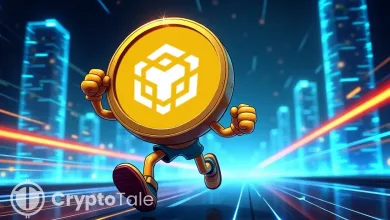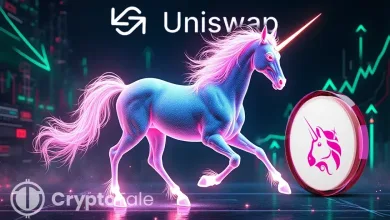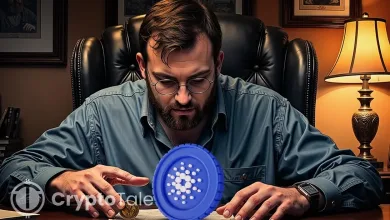Wall Street Turns to Ethereum as Tokenized Finance Expands

- Ethereum adoption grows as banks test tokenized assets and on-chain settlement models.
- Institutional Ether holdings rise while tokenized treasuries and stablecoins expand.
- Analysts split as bullish price targets clash with warnings of a possible bull trap.
Ethereum’s expanding role in institutional finance drew attention this week after comments on CNBC’s Power Lunch linked its future price to Wall Street’s push toward tokenized assets and on-chain settlement. Speaking on the program, Tom Lee, co-founder and head of research at Fundstrat Global Advisors, said Ether could reach between $7,000 and $9,000 by early 2026 as financial institutions adopt blockchain infrastructure.
He tied Ethereum’s investment case to its growing use as settlement and issuance technology for traditional markets. Lee said major firms want to tokenize assets, pointing to initiatives involving Robinhood and BlackRock. He said this shift aims to improve efficiency while anchoring real-world financial activity directly on Ethereum’s network.
Institutional Tokenization Push
Lee linked Ethereum’s outlook to its role as infrastructure rather than speculative technology. He said Wall Street aims to tokenize securities and settle trades on-chain, which could expand Ethereum’s long-term utility.
He added that deeper adoption could eventually support an Ether price near $20,000, though his near-term outlook focused on early 2026. The remarks came as tokenization efforts gain traction across traditional finance.
Institutional accumulation has also grown. BitMine Immersion Technologies, an Ether-focused treasury firm chaired by Lee, reported holdings of 4,066,062 ETH, according to CoinGecko data. The disclosure reflects growing corporate exposure to Ethereum.
At the same time, tokenized real-world assets expanded sharply in 2025. The total market value reached approximately $18.9 billion, up from roughly $5.6 billion at the start of the year.
Tokenized Assets and Network Dominance
Data from RWA.xyz indicates that U.S. Treasury debt is the largest tokenized asset class at about $8.5 billion. Commodities followed with approximately $3.4 billion in value. Ethereum hosts most tokenized real-world assets on public blockchains. By late December 2025, the network supported more than $12 billion in tokenized assets, exceeding BNB Chain, Solana, and Arbitrum.
Ethereum also leads stablecoin issuance. Roughly $170 billion in stablecoins circulate on the network, reinforcing its position as the main settlement layer for dollar-based on-chain activity.
Institutional interest continued in December when Depository Trust & Clearing Corporation announced plans to tokenize a portion of U.S. Treasury securities. The effort will run through its Depository Trust Company subsidiary on the Canton Network.
DTCC subsidiaries processed about $3.7 quadrillion in securities transactions last year. The move signals confidence in blockchain-based settlement for core financial markets.
Related: Ethereum’s Growing State Threatens Long-Term Decentralization
Analyst Speculation: Diverging Price Outlooks
Lee also expressed confidence in Bitcoin, calling it a genuine store of value with a $200,000 target over the next year. He said recent underperformance versus gold reflects a temporary phase. Still, not all analysts share the bullish view on Ether. Benjamin Cowen said Ethereum may struggle if Bitcoin enters a sustained bear market.
Speaking on the Bankless podcast, Cowen said a Bitcoin downturn would likely limit Ethereum’s upside. He warned that a move above Ethereum’s $4,946 all-time high from August 2025 could become a bull trap.
Fundstrat Capital has also projected volatility ahead. The firm expects a meaningful drawdown in the first half of 2026, with Bitcoin potentially falling 35% to $60,000–$65,000 and Ether declining to $1,800–$2,000.
As Wall Street accelerates tokenization while analysts debate market cycles, one question remains: can Ethereum’s growing institutional role outweigh broader crypto market risks?




